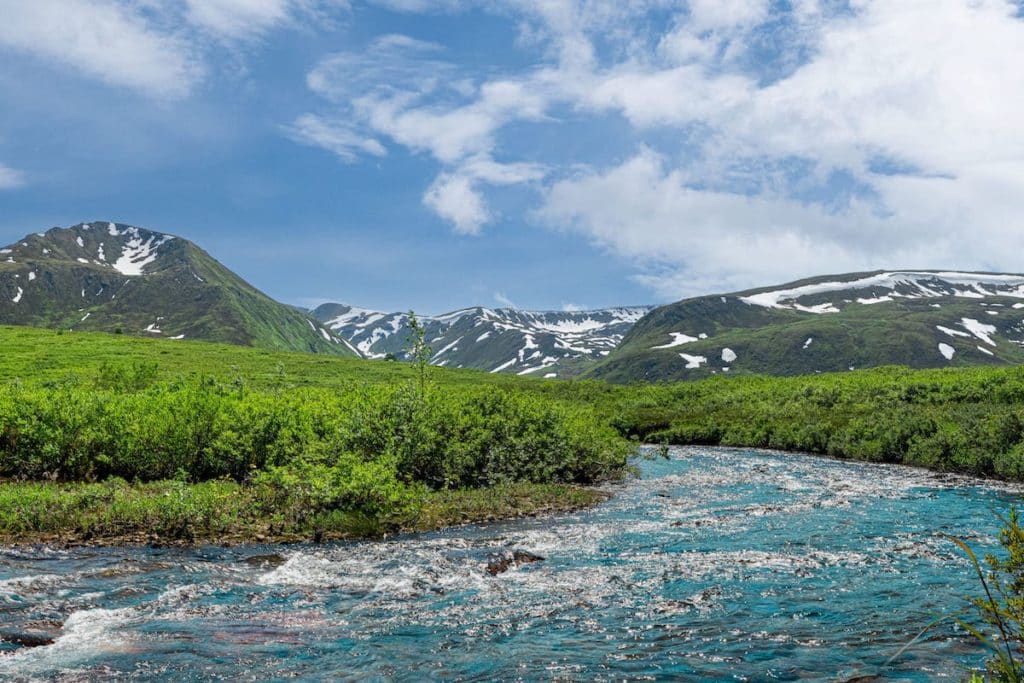If you love wide open spaces, dramatic landscapes, glacier ice, wildflowers, wildlife, and pure natural beauty, then Palmer, Alaska should be high on your travel radar. Nestled in the Matanuska-Susitna Valley, northeast of Anchorage, Palmer is a gateway to some of Alaska’s most dramatic scenery glaciers, mountain passes, pristine rivers, and remote wilderness. But as so often in Alaska, when you visit makes a huge difference to what you’ll see, how comfortable you’ll feel, and how much you’ll get out of it.
In this article, I’ll walk you through the best time to plan a trip and visit Palmer if you’re a nature lover: what each season offers, what to watch out for, plus tips to maximize your time. Think of this as your guide to picking the perfect window so that the landscape shows off its best, the trails are open, and the wildlife is out.
Getting to Know Palmer: Geography, Climate, Why Timing Matters
Before we dive into seasons, a quick sketch of Palmer so you can see why timing matters so much.
Palmer sits in a wide valley, the Matanuska-Susitna Valley. Mountains surround it: the Talkeetna Mountains to the north, Chugach to the south and east, plus peaks like Pioneer Peak nearby. To the east is the mighty Matanuska Glacier, and there are river valleys, forests, alpine tundra, and farmland.
The climate in Palmer is subarctic, which means long, cold winters, mild summers, and dramatic variations in daylight. Spring can feel like an awakening, summer bursts with life, autumn glows with colour, and winter turns the land into a snow-covered wonderland. Because of this, the timing of your visit shapes your entire experience what wildlife you’ll spot, which trails you can hike, and how much daylight you’ll have.
Season by Season: What Nature Lovers Can Expect
Here’s a breakdown of the seasons in Palmer, what each offers, and what to consider. As someone who’s always trying to time trips just right, I’ve tried to balance the magic moments with the practical tips.
Late Spring (Mid-May through June)
Spring in Palmer feels like a celebration. The land slowly shakes off its winter coat as days lengthen, rivers thaw, and wildflowers begin to paint the meadows with bursts of colour. There’s a sense of freshness and promise in the air perfect if you love the feeling of watching nature reawaken before your eyes.
What’s Great:
- Wildflowers begin to burst. The alpine meadows, Hatcher Pass, and surrounding valleys begin their bloom; the landscape shifts from stark winter greys to vibrant greens, yellows, and purples.
- Long daylight hours mean you can pack in more hiking or exploring. By late May, days are dramatically longer and warmer.
- Wildlife is more active, as animals come out of winter; bird migration is underway songbirds, waterfowl, and raptors.
- Snow melts (mostly) at lower elevations, opening trails, though alpine areas may still hold snow.
Considerations:
- Even in late spring, nights can be chilly. Bring layers.
- High-elevation trails may still be muddy or snowbound.
- Some tours and services only start running in late May or early June.
Best For: Lovers of wildflowers, photography, birding, and anyone who enjoys quieter travel with fewer crowds.
Summer (July through Mid-August)
Summer is when Palmer truly shines. This is the season of endless daylight, thriving wildlife, and open access to nearly every trail and glacier tour. If you picture yourself hiking under a golden evening sky at 10 p.m., this is the time to come.
What’s Great:
- Peak season for adventure: glacier hikes, rafting, kayaking, and long alpine treks.
- Warmest weather of the year; comfortable highs in the 60s°F (15–20°C).
- Long daylight, up to 19–20 hours, giving you time for long excursions and sunset photography.
- Cultural highlights like the Reindeer Farm, Musk Ox Farm, and local events add charm to your stay.
Considerations:
- Peak tourism means busier trails, higher prices, and more competition for lodging.
- Mosquitoes can be pesky in marshy areas.
- Rain showers are more likely as summer progresses.
Best For: Hikers, adventure seekers, families, and anyone wanting the widest range of experiences with the best odds of good weather.
Late Summer / Early Fall (Mid-August through September)
As summer fades, Palmer puts on one of its most beautiful displays autumn colours sweeping through the tundra and valleys. It’s a quieter time, a little cooler, and a little moodier, but in the best possible way. If you’re timing a trip to visit Palmer, this quieter time is a winner for fall colours and calmer trails.
What’s Great:
- Fall colours make the landscape glow in oranges, reds, and yellows.
- Fewer crowds than July, giving a more peaceful experience.
- Wildlife activity is high as animals prepare for winter, and birds begin their migration.
- The Alaska State Fair in late August/early September adds a lively cultural touch.
Considerations:
- Weather is unpredictable: cooler nights, more rain, and the possibility of early snow in higher areas.
- Shorter daylight hours mean less time outdoors compared to midsummer.
- Some seasonal tours and services begin to wind down.
Best For: Travellers who prefer quieter landscapes, fall photography, and combining nature with local culture.
Winter & Early Spring (October through April)
Winter transforms Palmer into a snowy dreamscape. Think frosty forests, frozen rivers, and skies alive with the northern lights. It’s cold, yes, but if you’re prepared, it’s an experience unlike any other. Early spring, meanwhile, still offers snowy adventures but with a hint of returning light and warmth.
What’s Great:
- Snow-covered scenery creates postcard-perfect views.
- Aurora borealis spotting is possible on clear winter nights.
- Winter sports like snowshoeing, skiing, dog sledding, and snowmobiling thrive here.
- Early spring brings more daylight and gentler conditions while still offering snowy landscapes.
Considerations:
- Very cold temperatures sometimes well below freezing make good gear essential.
- Many tours and attractions close for the season.
- Short daylight hours in December and January can feel limiting.
Best For: Adventurers, aurora chasers, winter sports fans, and travellers seeking solitude.
My Pick: When I’d Go, If I Were You
If I were planning a trip purely for nature in Palmer, I’d aim for mid-June to early August. That window gives the best balance: mild weather, almost full access, longest days, wildlife in abundance, and plenty of photography opportunities.
For a quieter but equally rewarding experience, late August into September is a close second especially if you want fall colours and don’t mind cooler nights.
And for winter lovers? February and March strike a sweet spot: deep snow, clearer skies, and a good chance at seeing the northern lights.
Tips to Make the Most of Your Timing
- Pack in layers weather changes fast, even in summer.
- Check trail and road access before heading out; conditions vary by season.
- Book ahead for summer, especially for glacier tours or accommodation.
- Bring bug spray in early summer.
- Stay flexible Palmer’s weather can surprise you, so have backup plans.
Final Thoughts
Palmer, Alaska is a place where nature doesn’t just sit quietly it performs. From blooming wildflowers to glowing auroras, every season has its own rhythm and rewards.
- For the full summer adventure with long days and open trails: July–early August.
- For quieter escapes and stunning colours: late August–September.
- For snow and northern lights: February–March.
For nature lovers, the best time to visit Palmer really depends on what you dream of seeing. Whether you’re chasing wildflowers, fall colours, or the northern lights, make a plan to visit Palmer and then start thinking about your next return trip.


